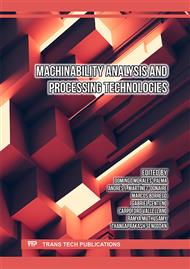p.13
p.25
p.35
p.45
p.57
p.67
p.77
p.87
p.101
Influence of Slicing Strategy on FFF Parts Dimensional Deviations
Abstract:
Dimensional accuracy is critical in industrial applications and can limit the use of Fused Filament Fabrication FFF. The printing steps required in material extrusion: pre-processing, processing, and post-processing influence dimensions. While processing and post-processing steps lead to inaccuracies due to machine limitations, dimensional errors from the pre-processing step are motivated by inadequate representations and mathematical approaches. This work studies if the slicing approach can contribute to dimensional deviations. It is considered a pyramid sample with four different wall angles to check this hypothesis. Next, its CAD model is sliced using three approaches: inclusive, middle, and exclusive. The resulting gcodes were compared against the theoretical pyramid sections to quantify deviations. It is worth mentioning that each slicing approach shows a different deviation curve along the printing direction and the wall angle. These results highlight the slicing strategy as a potential source of dimensional inaccuracies. Finally, three sample cases (one for each slicing strategy) are printed, measured, and compared using a 3D scanner and conventional measurements to support the numerical examples.
Info:
Periodical:
Pages:
57-63
Citation:
Online since:
October 2023
Keywords:
Price:
Сopyright:
© 2023 Trans Tech Publications Ltd. All Rights Reserved
Share:
Citation:



